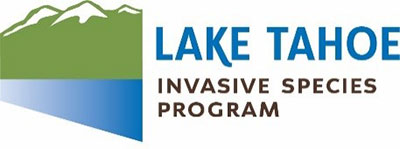Lake Tahoe, CA/NV — As demand soars for watercraft inspections at Lake Tahoe, agencies preventing the introduction of aquatic invasive species (AIS) into the lake’s pristine waters caution boaters to expect delays and to be prepared to change boating plans through the July Fourth weekend.
The Tahoe Regional Planning Agency (TRPA) and Tahoe Resource Conservation District (Tahoe RCD) have worked to increase the capacity of inspection stations since stay-at-home orders were lifted earlier this month. With a backlog of boaters waiting to get an inspection and the July Fourth holiday approaching, the agencies caution that wait times for inspections may cause delays or force boaters to change plans.
Boat inspections will be on a first-come, first-served basis from July 1 through 5. Following the holiday, starting July 6, an appointment system will resume which is available now and through the remainder of the season. During appointments, no drop-in inspections are available and only boaters with an appointment are allowed at inspection locations. The inspection stations in Meyers, CA; Truckee, CA; and at Spooner Summit, NV will serve boaters through the holiday weekend. The Alpine Meadows, CA station will open later in July.
Boater Information on COVID-19 Watercraft Inspections:
- Face-coverings are required while out of the vehicle during watercraft inspections.
- Maintain 6 feet of distance from inspection staff and others.
- Try to arrive with minimal people in your vehicle.
- Obey traffic laws in line at the stations.
- Have patience and expect delays while visiting Tahoe.
- Prepare to change plans while recreating and avoid crowded areas.
- Prepare for boat inspections by arriving Clean, Drained, and Dry. Wet or hazardous boats must be decontaminated or quarantined, costing additional time or being barred from launching. Visit https://tahoeboatinspections.com/prepare-for-inspection/.
- Enforcement is a critical part of the Lake Tahoe invasive species program and tampering with inspection seals is a major violation with heavy fines.
Thanks to the diligence of boaters and inspectors, no new aquatic invasive species have been detected in Lake Tahoe in the 12 years of the program’s history.
“These are truly unprecedented circumstances for boaters and for our agencies in the fight against aquatic invasive species,” Tahoe RCD Executive Director Nicole Cartwright said. “We appreciate the boating community’s patience and cooperation over the coming holiday weekend as we work to get boaters on the water quickly and safely.”
The COVID-19 shutdown has delayed inspection locations reaching full capacity. While inconvenient, the wait for an inspection is imperative. Agencies are pursuing enforcement options for boaters that attempt to skirt the rules.
“We cannot let our guard down while protecting Lake Tahoe from aquatic invasive species,” TRPA Executive Director Joanne S. Marchetta said. “Inspections are critical to protect the very reason that people love to recreate on Lake Tahoe. We need to keep inspectors and the public safe from the spread of coronavirus while protecting the lake’s ecosystem.”
Even with inspection locations and hours ramping up, agencies are encouraging boaters who can to change their boating plans by scheduling an appointment after the Fourth of July holiday.
Invasive species can have devastating environmental and economic impacts on industries, communities, and native species populations. Watercraft are the largest source for spreading aquatic invasive species into new waterways. Under Lake Tahoe’s watercraft inspection program, every motorized watercraft is inspected to ensure it is Clean, Drained, and Dry and not carrying AIS before launching.
 The Lake Tahoe Aquatic Invasive Species Program is implemented by 40 public and private partner organizations, including federal, state, and local jurisdictions, research partners, public utility districts, and private marinas. The Tahoe Regional Planning Agency and the Tahoe Resource Conservation District lead the program in collaboration with the public and private partners. The program’s mission is to prevent, detect, and control aquatic invasive species in the Region so that future generations can enjoy Lake Tahoe.
The Lake Tahoe Aquatic Invasive Species Program is implemented by 40 public and private partner organizations, including federal, state, and local jurisdictions, research partners, public utility districts, and private marinas. The Tahoe Regional Planning Agency and the Tahoe Resource Conservation District lead the program in collaboration with the public and private partners. The program’s mission is to prevent, detect, and control aquatic invasive species in the Region so that future generations can enjoy Lake Tahoe.